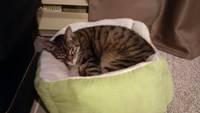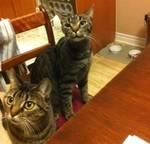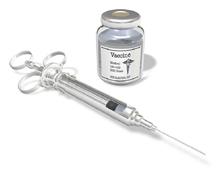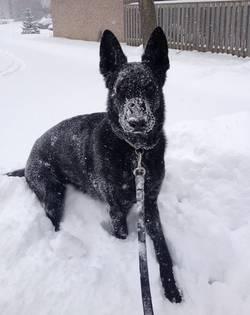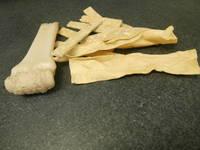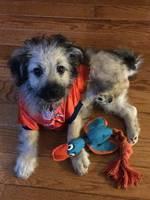
There are many interesting myths out there about dogs. Here at Mitchell Veterinary Services, we are committed to educating everyone about their pets. Here are the truths to the very common myths that we often hear.
- You should allow your dog to lick its wounds to help it heal. In the wild it may be beneficial for animals to lick their wounds to help keep them clean of dirt and debris. With our pet dogs, licking can do more damage than good. Licking at a wound will keep it moist. This allows bacteria to grow and delays healing. The best way to help wounds heal is to keep them clean and dry by not allowing your dog to lick at them.
- Dogs are colour blind. There is a common myth that dogs only see in black and white. This is not true as dogs are actually able to see some colours. Dogs see similarly to red-green colour blind people.
- Chewing bones is good for your dog’s teeth. We commonly see dogs with fractured teeth from chewing on things such as bones and antlers. So, rather than being good for your dog’s teeth, they can result in dental pain and tooth extractions. Bones can also get lodged in the esophagus, stomach or intestines, resulting in emergency surgery. View our previous blog on safe chewing options for your dog.
- A dog wagging its tail means it’s happy and friendly. This is untrue. Tail wagging varies, and conveys different messages depending on how it is wagged. While a tail wagged at a medium height may suggest a happy dog, a dog wagging a low held tail, could mean fear. A dog with his tail raised very high can be a dominance signal. In either of these two cases, both dogs are not necessarily happy and may bite. Overall, you should not base your decision on how comfortable or happy a dog is by tail wagging alone.
- Dogs eat grass when they are feeling sick. For the most part, dogs likely occasionally eat grass because they enjoy the taste of it. However, because grass is not digestible for dogs it can cause stomach irritation and cause them to vomit.
- Female dogs should go through a heat/have a litter of puppies in order to be happier/healthier. This myth is unfortunate as the opposite is actually true. Many studies have shown that the longer you wait to spay a female, the greater her risk for mammary cancer and other reproductive diseases. Learn about more myths about spays and neuters on our previous blog.
- A cold/warm nose indicates health. The heat or moistness of your dog’s nose is not an indicator of its health. If you have any reason to suspect it is ill, you should take it to a veterinarian right away, no matter what its nose is like!
- You can’t teach an old dog new tricks. Old dogs are capable of learning new things. In fact, we recommend training your dogs and teaching them new things through their whole lives. Like in humans, learning new things can help prevent cognitive dysfunction (i.e. Dementia) in older dogs.
- Feeding garlic prevents fleas. Garlic is completely ineffective at preventing fleas and may even be dangerous to give to your pets at certain doses. Your veterinarian can provide you with many safe and proven effective flea prevention and treatment options. Click here to learn more.
- Dogs that are related to each other or too different in size will not mate. Any intact dog will mate with any other intact dog that it has access to, no matter the relation, breed, or size.
These are just some of the common myths we hear. There are still many others out there. If you have any questions about your pet’s behaviour, health or what pet products are good to use contact our team at Mitchell Veterinary Services.




